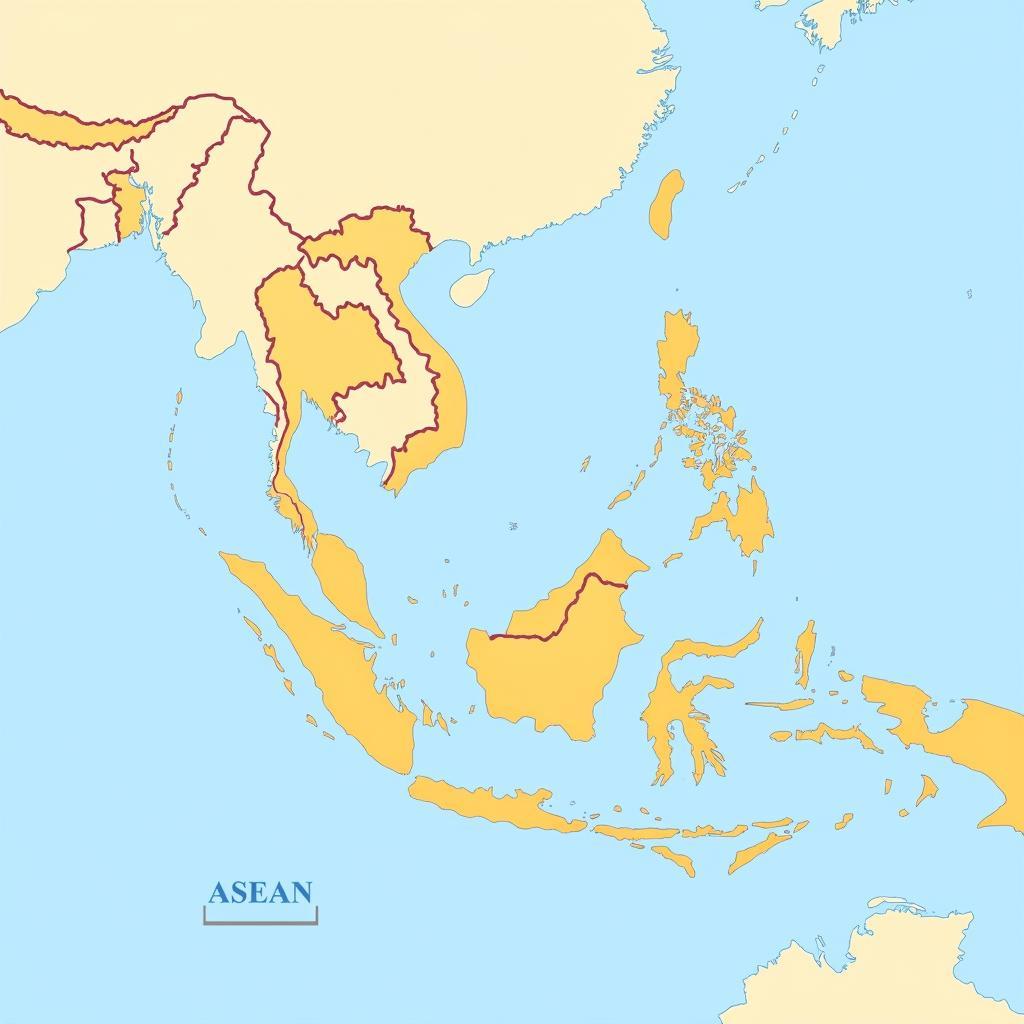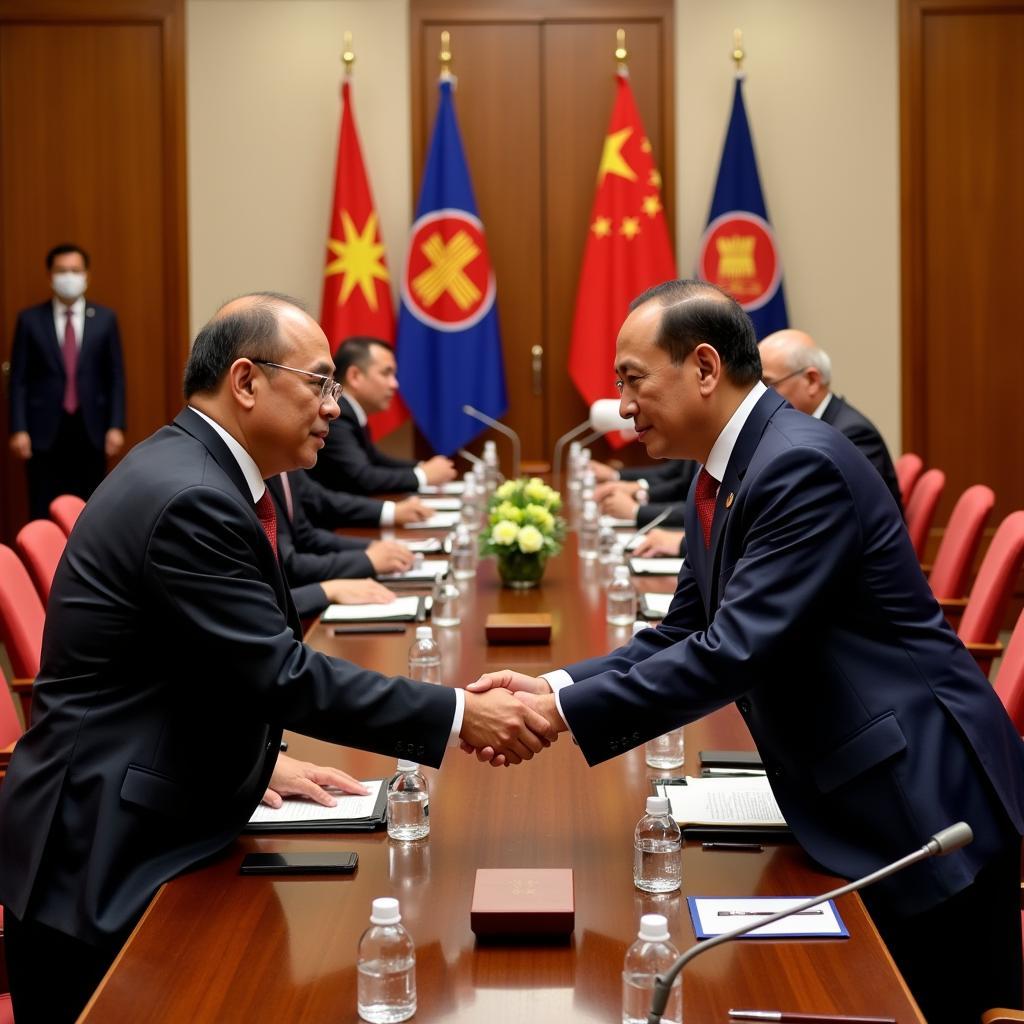ASEAN, the Association of Southeast Asian Nations, was founded on August 8, 1967. This date marks a pivotal moment in the history of Southeast Asia, signifying a commitment to regional cooperation and unity. But what led to this significant event, and how has it shaped the region we know today?
The Birth of ASEAN: August 8, 1967
The Bangkok Declaration, signed in 1967 by the five founding members – Indonesia, Malaysia, the Philippines, Singapore, and Thailand – officially established ASEAN. This agreement laid the groundwork for a regional organization dedicated to accelerating economic growth, social progress, and cultural development. It also aimed to promote regional peace and stability through adherence to the principles of the United Nations Charter. The choice of August 8th was not arbitrary; it symbolized a new dawn for Southeast Asia, a region emerging from the shadows of colonialism and seeking its own path towards prosperity.
Why Was ASEAN Founded? The Context and Motivations
The mid-20th century was a turbulent period for Southeast Asia. The region was grappling with the legacies of colonialism, the rise of communism, and internal conflicts. The founding nations recognized the need for a unified front to address these challenges and foster a more stable and prosperous future. why was asean founded offers more details on this topic. The formation of ASEAN was not simply a political maneuver; it was a strategic response to the prevailing geopolitical climate and a testament to the shared aspirations of the Southeast Asian nations.
Key Factors Leading to ASEAN’s Formation:
- Post-Colonial Nation-Building: The newly independent nations sought to establish their identities and pursue their own development agendas.
- The Cold War and the Threat of Communism: The spread of communism in the region was a major concern, prompting the need for a collective security approach.
- Regional Conflicts and Tensions: Several territorial disputes and internal conflicts threatened regional stability.
- Desire for Economic Cooperation: The founding nations recognized the potential benefits of economic integration and regional trade.
 Map of Southeast Asia Highlighting ASEAN Countries
Map of Southeast Asia Highlighting ASEAN Countries
ASEAN’s Expansion and Evolution: From 5 to 10
Since its inception, ASEAN has expanded to include Brunei Darussalam, Vietnam, Laos, Myanmar, and Cambodia. This expansion reflects the growing recognition of ASEAN’s importance as a platform for regional cooperation. You can learn more about the current member states at 10 asean countries name. The organization has evolved significantly, moving beyond its initial focus on political and security cooperation to encompass a wider range of issues, including economic integration, social development, and cultural exchange. This evolution has strengthened ASEAN’s role as a key player in the regional and global arena.
ASEAN Today: A Dynamic Regional Bloc
Today, ASEAN stands as a testament to the power of regional cooperation. It has played a crucial role in promoting peace, stability, and prosperity in Southeast Asia. From ase was founded in its humble beginnings, ASEAN has transformed into a dynamic regional bloc with a growing global influence. The organization continues to adapt to the changing geopolitical landscape, addressing new challenges and opportunities while upholding its founding principles.
A Glimpse into ASEAN’s Impact:
- Economic Integration: The ASEAN Economic Community aims to create a single market and production base, facilitating the free flow of goods, services, investment, and skilled labor.
- Socio-Cultural Cooperation: ASEAN promotes cultural exchange, educational collaboration, and people-to-people connectivity.
- Political and Security Cooperation: ASEAN provides a platform for dialogue and cooperation on regional security issues, contributing to peace and stability.
“ASEAN’s strength lies in its diversity and its ability to bridge cultural and political differences,” notes Dr. Anya Sharma, a prominent Southeast Asian studies expert. “It serves as a model for regional cooperation in a complex and interconnected world.”
 ASEAN Summit Leaders Meeting
ASEAN Summit Leaders Meeting
Conclusion: A Legacy of Cooperation
When Was Asean Founded? August 8, 1967. This date signifies more than just the establishment of a regional organization. It marks the beginning of a journey towards greater cooperation, integration, and prosperity for Southeast Asia. ASEAN’s continued success hinges on the collective commitment of its member states to uphold the principles of unity, solidarity, and mutual respect. ASEAN, founded in 1967, remains a beacon of hope for a more peaceful and prosperous future for the region. Learn more about a specific date with asean 8 agustus 1967. And you might be surprised to find out is serbia in asean.
FAQ
- What does ASEAN stand for?
- How many countries are in ASEAN?
- What are the main goals of ASEAN?
- When did ASEAN expand beyond its five founding members?
- What is the ASEAN Economic Community?
- How does ASEAN promote regional peace and security?
- Where is the ASEAN headquarters located?
Need support? Contact us 24/7: Phone: 0369020373, Email: [email protected], or visit us at: Thôn Ngọc Liễn, Hiệp Hòa, Bắc Giang, Việt Nam.

